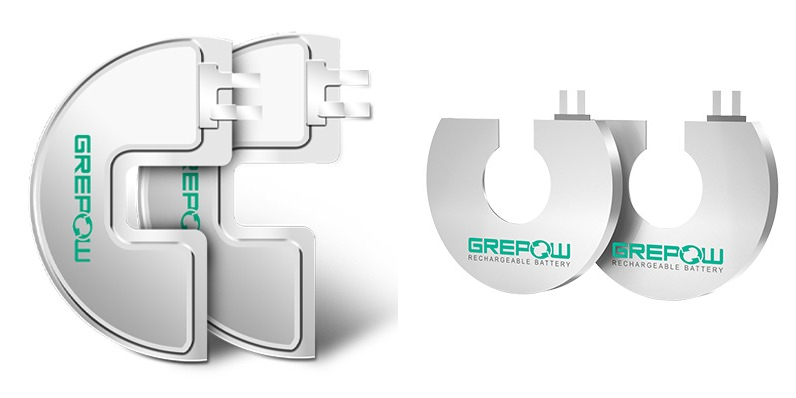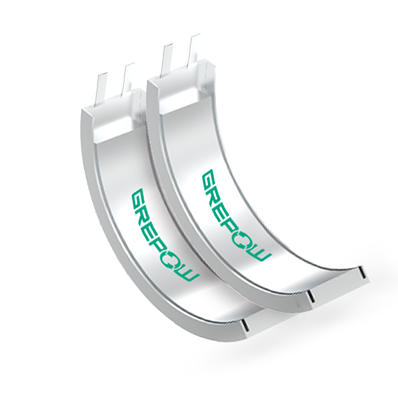Are Smart Helmets Worth It?
In an era where technology seamlessly integrates into our daily lives, smart helmets are emerging as the next frontier in personal safety and convenience for riders. These helmets, equipped with advanced features like Bluetooth connectivity, heads-up displays, and even crash detection systems, offer far more than traditional helmets ever could. But with the added benefits come higher costs, maintenance needs, and privacy concerns, leaving many to wonder: are smart helmets truly worth the investment? In this article, we'll explore the concept of smart helmets, how they differ from traditional models, and whether the advantages justify the price.
What Is the Concept of Smart Helmet?
A smart helmet is a type of headgear that integrates advanced technology to enhance the safety and functionality of the helmet. Smart Helmets integrate advanced technologies such as sensors, cameras, communication modules, and augmented reality (AR) displays into traditional helmet designs, transforming them into intelligent safety gear with added functionalities. These features enable riders to stay connected, navigate, and communicate while riding, making smart helmets a popular choice for riders who want to stay connected while on the road.Originally developed for motorcycle riders, Smart Helmets have expanded their applications to industries such as construction, firefighting, cycling, and sports, offering users enhanced protection, connectivity, and data insights in real-time.
What Is the Difference Between Normal Helmet and Smart Helmet?
While both smart helmets and traditional helmets share the primary goal of safeguarding the wearer's head, the way they achieve this goal and the range of functionalities they provide markedly differ. Comparison with Traditional Helmets, Smart helmets offer several advantages over traditional helmets.Let's compare these two types of helmets:
Technological Integration
The principal distinction lies in the integration of technology. Traditional helmets are simple in design, primarily focusing on the physical protection of the wearer. Conversely, smart helmets are embedded with various electronic components and software, expanding their utility far beyond just impact protection. One of the standout features of smart motorcycle helmets is Bluetooth connectivity. This technology allows riders to connect their helmets to their smartphones, enabling hands-free communication. Riders can make and receive calls, listen to music, or get GPS directions without taking their eyes off the road or their hands off the handlebars.This seamless integration enhances safety by reducing distractions and keeping riders focused on their journey.
Information Display
Some smart helmets offer heads-up displays or HUDs. This feature provides riders with essential information, such as speed, temperature, and battery life, right within their line of sight. Traditional helmets, lacking such tech integration, do not provide any form of information display.
Video Recording Capabilities
Certain smart helmets incorporate built-in cameras, enabling riders to record their journeys. This feature can be valuable for leisure, sports training, or even for legal reasons in case of an accident. Traditional helmets do not offer video recording capabilities.
Voice Command Functionality
Smart helmets often support voice commands, providing hands-free control over various features, such as music playback, phone calls, or navigation. This hands-free operation is not possible with traditional helmets.With one-touch voice command functionality, smart helmets allow riders to control various features using their voice. This hands-free control extends to making calls, adjusting music, or even accessing navigation. The ease of using voice commands minimizes the need for manual adjustments, thereby keeping the rider's attention on the road. This feature significantly enhances the convenience and safety of the riding experience.
Walkie-Talkie By APP
Traditional helmets offer little in terms of rider-to-rider communication. In contrast, smart helmets equipped with app-based intercom systems allow for unlimited range communication. This means riders can stay connected with their group regardless of distance, making group rides more enjoyable and coordinated.
Fall Detection and SOS Alert
Safety is paramount when it comes to riding, and smart helmets excel in this area. In the event of an accident, the helmet can detect the fall and automatically send an SOS alert to pre-set emergency contacts. This immediate response can be crucial in getting timely medical assistance, potentially saving lives. Traditional helmets lack this level of proactive safety, making smart helmets a superior choice for rider protection.
In summary, while both types of helmets serve to protect the rider, smart helmets offer a range of additional features focused on enhancing connectivity, convenience, and information access during rides. On the other hand, traditional helmets, being less feature-packed, offer simplicity and are often available at a lower price point.
Are Smart Helmets Worth It?
Smart helmets and other biometric sensors that monitor our movement are the wave of the future and consumers are beginning to use smart helmets. In the evolving landscape of personal transportation, smart helmets represent a significant leap forward in safety and technology. Unlike traditional helmets, smart helmets provide more than just impact protection. Smart helmets have sensors in the visor that monitor speed, environment, and driver behaviour to help ensure that the rider is riding safely and has no unnecessary risk. Given the advancements in helmet technology, the question of whether smart helmets are worth the investment is met with an affirmative from safety experts and tech enthusiasts alike. The integration of safety features like collision detection, emergency alerts, and enhanced visibility through LED lighting makes these helmets a paramount choice for riders looking for an upgrade in safety and convenience.

What Are the Advantages of Smart Helmets?
Enhanced Safety
The core benefit of smart helmets is their enhanced safety features. With built-in sensors, these helmets can detect crashes and immediately alert emergency contacts with the rider’s location and status. This rapid response can be crucial in preventing severe injuries or even saving lives.
Emergency alert
Smart helmets alert you and your friends that you’re about to crash. You can easily send your location and a note to your friends if you’re hurt. Smart helmets work with your smartphone to send instant messages to family or friends. If you’re hurt, you can send your location and a note.
Improved Visibility
Many smart helmets include LED lights that improve the rider's visibility to other road users, particularly in low light conditions. This can significantly reduce the risk of accidents.
Accident data
Smart helmets collect data about the helmet’s performance. These data can help analyze and learn about the best way to develop and improve the product.
Comfort and Convenience: Modern smart helmets are designed with comfort in mind, featuring adjustable ventilation systems and lightweight materials that make long rides more enjoyable. The ability to handle calls and listen to music or navigation cues without having to stop or look away from the road adds a layer of convenience that traditional helmets cannot offer.
What Are the Disadvantages of Smart Helmets?
While Smart Helmets offer compelling benefits, they also pose challenges. It's important to consider potential drawbacks before making a purchase decision. Here are some possible drawbacks to keep in mind:
Cost and Affordability
Smart helmets tend to be more expensive than traditional helmets due to the incorporation of advanced technology and additional features. The cost of Smart Helmets remains a barrier to adoption for some users, particularly in price-sensitive markets or industries with budget constraints.
Privacy and Data Security
Protecting user privacy and data security is paramount in Smart Helmet deployments, as they collect sensitive information such as location data, biometric data, and audiovisual recordings. Challenges such as data breaches, unauthorized access, and misuse of personal information may expose users to privacy risks and legal liabilities, undermining trust and adoption of Smart Helmets.
Limited Battery Life
Smart helmets rely on electronic components that require power to operate. This means they have a limited battery life and may need to be recharged regularly, depending on usage. For longer rides or multi-day trips, it's important to plan for sufficient battery life or have backup power sources.
Safety and Reliability
Ensuring the safety and reliability of Smart Helmets is essential to build user trust and confidence in their performance and effectiveness. Challenges such as product defects, software bugs, and sensor malfunctions may compromise the safety and reliability of Smart Helmets, leading to accidents or injuries in real-world scenarios.
Maintenance and Durability
Smart helmets require proper maintenance to ensure the longevity of their electronic components. Exposure to extreme weather conditions, impacts, or mishandling can affect the durability and functionality of the smart features. Regular inspection, following manufacturer guidelines, and proper storage are essential for ensuring the helmet's durability.
Grepow Pouch C Shaped LiPo Battery: Powering the Future of Smart Helmets
Unique shape ensures a perfect fit
The unique hollow center design is particularly well-suited for use in smart motorcycle helmets and smart bike helmets, where it can be seamlessly integrated into the helmet's structure. This shape not only optimizes space but also provides enhanced protection, minimizing the risk of damage to the battery in case of impact.
Cutting-edge energy for enhanced safety features
Grepow pouch C shaped lipo battery is specifically designed to meet the demands of the modern smart helmet. With a capacity to provide up to 30 hours of runtime, depending on the usage intensity of the integrated features, this battery ensures that cyclists can enjoy extended rides with peace of mind, knowing that their helmet’s safety features are fully operational.
Eco-Friendly and Cost-Effective
The long battery life reduces the frequency of charging, and the modular design means fewer replacements and less waste. Furthermore, the battery itself is built to last, which is both planet-friendly and wallet-friendly.

As a global leading lipo battery manufacturer, Grepow can provide highly customized smart helmet battery solutions to maximize the performance of the device. Grepow pouch C shaped lipo battery is not just a power source; it is a key enabler of the advanced safety and convenience features that define the modern smart helmet. Its capacity to efficiently drive integrated lights, turn signals, automatic brake lights, and emergency alert systems makes it an indispensable component of the smart helmet. With this technology, cyclists can enjoy enhanced safety, extended usability, and greater peace of mind, all while supporting sustainable practices. As wearable technologies continue to evolve, the role of powerful, reliable, and efficient batteries like the Grepow shaped lipo battery will undoubtedly expand, continuing to empower users and pave the way for future innovations in personal safety equipment. If you have any questions or needs, please feel free to contact us at info@grepow.com.
Related Articles:
How to Choose Battery for Smart Glasses?
Wearable Smart Patch Battery Solutions
Coin Cell vs Button Cell vs Pouch Cell: Understanding the Differences
Grepow Unveils Cutting-Edge Metal-Cased Shaped LiPo Batteries for Advanced Wearables
Related Articles
-

Join Grepow at the 2025 Global Sources Hong Kong Show
2025-04-08 -

Join Grepow at AAA 2025+HearTECH Expo
2025-03-17 -

Join Grepow to Global Sources Mobile Electronics Show
2024-10-14




















































